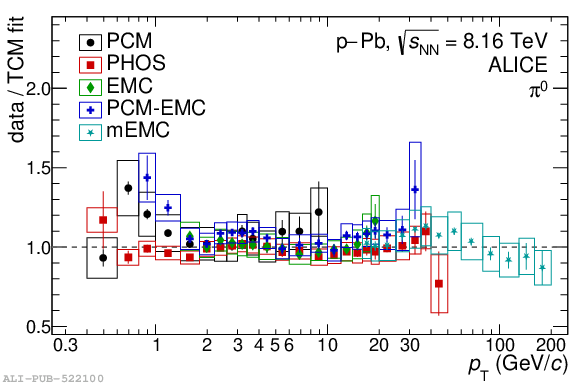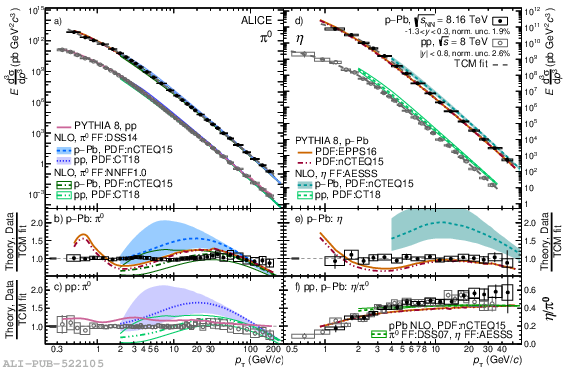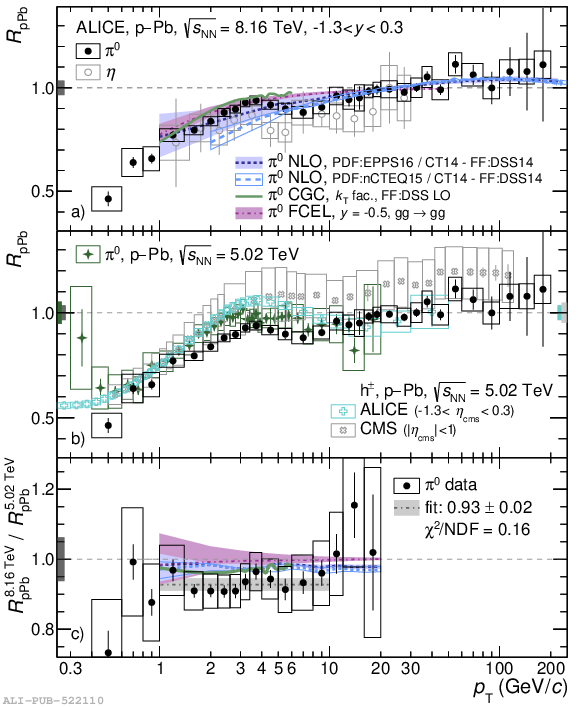Neutral pion ($\pi^{0}$) and $\eta$ meson production cross sections were measured up to unprecedentedly high transverse momenta ($p_{\rm T}$) in p-Pb collisions at $\sqrt{s_{\rm NN}}$ = 8.16 TeV. The mesons were reconstructed via their two-photon decay channel in the rapidity interval $-1.3<~ y <~0.3$ in the ranges of $0.4<~p_{\rm T}<~200$ GeV/$c$ and $1.0<~p_{\rm T}<~50$ GeV/$c$, respectively. The respective nuclear modification factor ($R_{\rm pPb}$) is presented for $p_{\rm T}$ up to of 200 and 30 GeV/$c$, where the former was achieved by extending the $\pi^{0}$ measurement in pp collisions at $\sqrt{s}$ = 8 TeV using the merged cluster technique. The values of $R_{\rm pPb}$ are below unity for $p_{\rm T}<~10$ GeV/$c$, while they are consistent with unity for $p_{\rm T}>10$ GeV/$c$, leaving essentially no room for final state energy loss. The new data provide strong constraints for nuclear parton distribution and fragmentation functions over a broad kinematic range and are compared to model predictions as well as previous results at $\sqrt{s_{\rm NN}}$ = 5.02 TeV.
Phys. Lett. B 827 (2022) 136943
HEP Data
e-Print: arXiv:2104.03116 | PDF | inSPIRE
CERN-EP-2021-053
Figure group




